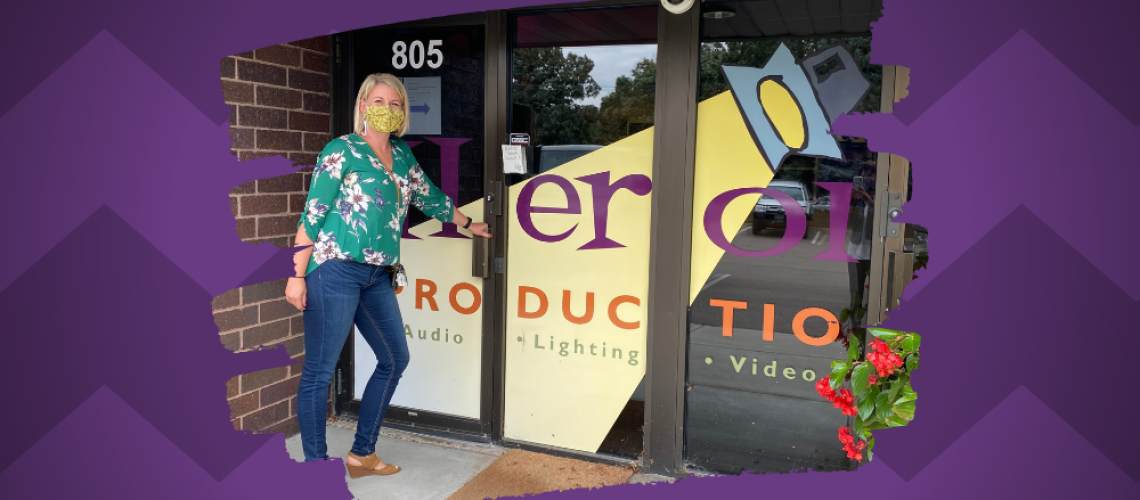A Behind-the-Scenes Look at Planning with Heroic Productions
At Do Good Events, we value partnership, collaboration, and bringing you the latest information to help you be successful in planning your event. This month, we caught up with Heroic Productions to give you a deeper look at the pre-production process for virtual events. When planning your virtual event, your production team takes on an even larger role. This is because your production is not just audio and visual anymore, they also act as your venue. Read more to see how Heroic Production is embracing this role and helping their client achieve success.
Heroic Production Interview –
Whoever said it’s easier and less time to do a virtual event, in comparison to a live event, has a lot to learn about this “new normal” of our industry. However, what we’ve learned is that people aren’t having the upfront and honest conversations of why this is. Well, we’re here to help answer some of those questions and give you an exclusive behind-the-scenes breakdown of everything you need to know about pre-production for a virtual event.
Let’s first tackle some of the hard-hitting questions leading up to the event.
What is the ideal timeline and process leading up to the event?
Just like a live event, virtual events require months of pre-planning and pre-production. The timeline can vary depending on the number of elements your virtual event will have. Is there an app or website being built to support the event? Will you have breakouts/multiple streams going at once? Are your speakers presenting in a studio or at home? If at home, are you sending speaker kits to your speakers? These are all helpful questions you should be prepared to discuss with your AV/production partner. Most AV/production companies will say 6 months out is comfortable. The further out the better.
Any suggestions for how to decide to go live or pre-record?
This question is one we hear quite often. It all goes back to understanding the end goal of your event. What are the top priorities? Do you want real-time engagement with the speaker and audience? Or are you just trying to ensure your message is delivered to the audience? Pre-recording provides better insurance and cushion for both technical and human error. But it eliminates the opportunity to connect with the audience. Not to say there aren’t other ways to add engagement with pre-recorded content, it just means you and your AV/production team get to think creatively and outside the box.
What happens during a rehearsal and why is it necessary?
Could you imagine going into a live event without rehearsing? What a nightmare! The same rules apply to virtual events. If anything, rehearsal is the most crucial piece of any virtual event. It’s a full day commitment for speakers to practice presentations, production to test technical equipment such as audio, video, streams and/or engagement tools, and do a full run of show as if you had an audience.
This is also a good time to practice Plan B scenarios. Say one of your virtual presenter’s had a storm wipe out their internet the day before your big event. What’s your next move? Does your team have recorded content to replace the speaker? Do you have a backup virtual speaker on standby to step in?
So, don’t skip out on rehearsal day. This where you finally get to see everything come together and work out the kinks. Sometimes what you may have had envisioned just doesn’t cut it for virtual. This is another great opportunity to readjust the vision before you have a live audience watching.
How is the stream managed?
Picture an event app or website as the “venue” of the virtual event and the stream as the “stage”. The stream (stage) lives within the app, and just like a live event, everything that’s on and behind that stage can be managed by your AV/production company. Whether that’s audio, video, slide transitions, anything that’s getting pushed to the audience can first go through production and then be pushed out onto the stream. Now, an important reminder is that your AV/production team does not have control over certain elements of the stream and it’s crucial to understand what those elements are. Say, for example, your virtual show is being pushed out via Zoom. And the entire Zoom platform crashes because too many people across the world are using it. This would be a streaming platform issue and one that is out of the hands of anyone except Zoom. Another example might be if one of your audience members has poor internet connection. The stream might be choppy for them because they’re viewing on a mobile hotspot, instead of wifi, causing the video to lag. To avoid issues like this, your AV/production partner should provide recommendations you can share with your audience to help them have the best streaming experience. Recommendations might include using a specific browser, jumping on a private wifi or using a location that has a high internet speed, along with instructions on how to check their internet speed.
Virtual events are no easy task and level up to, or even exceed, the same amount of time and effort to host a live event. The important note to keep in mind – they can make an impact. They still allow you to create experiences, share messages and make memories, and that, friends, is why it’s always worth it!
Thank you to the Heroic Productions team to collaborating on this blog! Warehouse 15 is a great option if you are exploring a virtual event.

